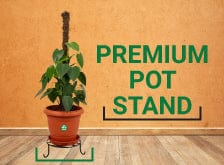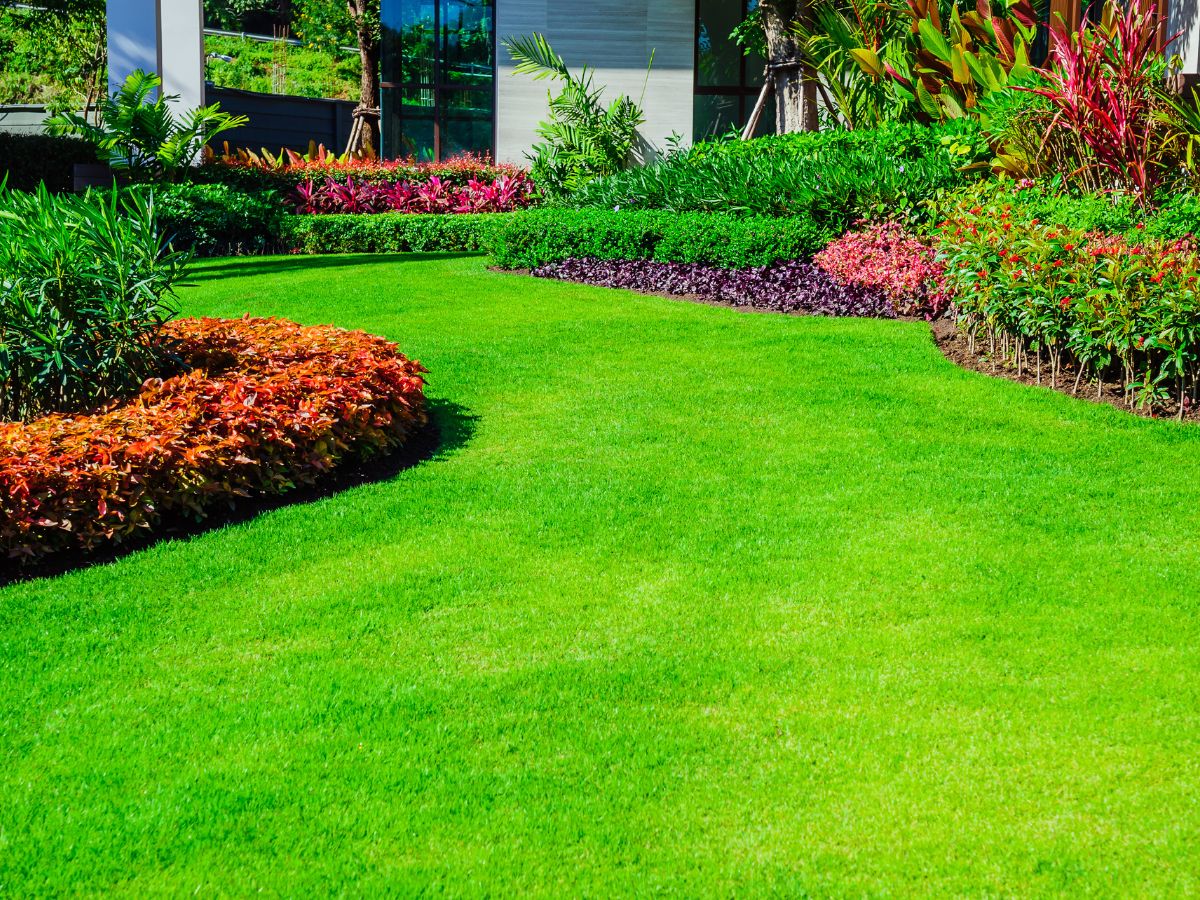How to Grow
What is Cocopeat - Uses & Advantages For Growing Home & Lawn Plants
You might have thought that the thin, fiber-like substance which holds the coir fiber in coconut husk was the most unimportant part of a coconut.
But in reality, it has the power to supercharge the growth of your home and lawn plants.
This substance, also referred to as cocopeat, is 100 percent organic and biodegradable.
In this blog, we will learn about
- What is cocopeat
- Why use coco peat
- Uses of cocopeat
- Advantages of using cocopeat for home and lawn plants
- How to use cocopeat to improve your home and lawn garden
Ready to dig deeper? So, let’s get started.
What is Cocopeat
Cocopeat is also known as coco coir. It is the middle layer of a coconut drupe which is a thick fibre between outer and inner shell. This coir is used in upholstery, brushes, automobile seats, etc.
Why Use Coco peat
The typical potting soil you purchase at the store has its setbacks. It has drainage issues and the peat in it may cause environmental hazards.
On the other hand, cocopeat is eco-friendly, biodegradable and a smart way to use a waste product.
Uses of Cocopeat
Vastly speaking the uses of cocopeat can be divided into three broad categories mentioned below.
Horticular uses
According to https://www.actahort.org/books/517/517_33.htm “Cocopeat or coir dust is a by-product separated during processing of coconut (Cocos nucifera L.) coir. As a by-product of coir manufacturing, cocopeat is often unutilized or burnt in the open. Of late, due to environmental concerns and also diminishing supplies of peat soils for horticultural substrates, cocopeat is being considered as a renewable peat substitute for use in horticulture.”
The uses of cocopeat in horticulture are mentioned below: -
- Composted cocopeat serves as good organic manure for plant and vegetation growth
- Cocopeat is often used as an underlying layer in greenhouses
- It has been brought to notice recently that peat moss contributes to global warming. So, cocopeat has been in great demand as it is eco-friendly and sustainable
- Cocopeat is massively used in nurseries for germination of seeds. That’s because cocopeat retains moisture and provides a hospitable environment for seed germination
- For the beginners in gardening as well as by veterans, cocopeat is used as a substrate in roof gardening. That’s because cocopeat is light-weight and retains moisture.
- Cocopeat is a wonderful ingredient to enhance soil aeration, soil moisture, and soil texture.
- Horticulturists use cocopeat in potting soil to improve the water retention capacity of the soil
Animal bedding
- It may surprise you that cocopeat alongside coco chips are used profusely as animal bedding for horse stables
- As a mulch in landscaping coco chips are used
- Cocopeat and coco chips are applied in animal bedding for pets like spiders, snakes, frogs, and lizards
Industrial applications
- Cocopeat is used in the extraction of natural dyes
- Cocopeat is light in weight and spongy in texture, making it an excellent oil absorbent in industries.
- In manufacturing of particle boards, cocopeat is hugely used
- Cocopeat is a great insulator for the production of fuse plugs and allied applications
Advantages of coco peat for growing home & lawn gardens
Increases soil porosity
Soil porosity is an extremely important factor in plant growth. It is the fraction of the total soil volume that is taken up by the pore space. Why is it important? Because without good soil porosity, air, water, and nutrients won’t reach the soil and improve plant growth.
A good soil porosity is 50%, and Cocopeat has above 60% soil porosity. It means cocopeat will do wonders for your crops.
Enhances water retention
With cocopeat application, the water retention capacity of soil increases by up to 800%. This means you can save a lot of water too, as the vegetative cover would require less water to thrive. When you have cocopeat in your soil, you can always be relaxed as your plants and crops won’t be affected by underwatering or overwatering.
Also remember that higher water holding capacity means the quantity of cocopeat required per plant would also be less.
Used for varied plants
Cocopeat is wonderful for all types of plants. Be it medicinal plants, flowering plants, leafy green vegetables, or succulents, every type of plant can grow well in cocopeat. It may surprise you that even tall crops like sugarcane can also be grown in this medium.
It is renewable
One of the best advantages of cocopeat is that it is renewable. So, there is no tension of this being finished from our environment. There will always be enough cocopeat for our future generations also because it can always be renewed.
Easier to re-wet
As cocopeat is light-weight, it is easier to re-wet and that saves time and effort both.
Keeps pests away
Cocopeat has antifungal and antibacterial properties which will keep the pests away. No pests means better soil porosity and better growth.
Promotes root growth
Cocopeat promotes better root growth because it helps in better aeration of the soil. The more your soil is loose and airy, the better its root growth will be. And better root growth means better plant growth.
Eco-friendly
Cocopeat or coco coir is a natural waste product and when you are using it for plant growth, that means you are contributing towards a better environment. And this has a minimal impact on the environment. Peat moss—the thing that is greatly used by horticulturists or agriculturists, will take 100 years to restock, and that’s why cocopeat is being used more. Cocopeat is an eco-friendly option to enhance the vegetation, and that’s why it can be and should be used more.
Easily available
Online or offline, you will get cocopeat easily through any medium of shopping. In the last few years, the use of cocopeat has considerably increased because of its bio-degradable, organic, and re-usable nature, which poses no danger to the environment. And that’s why it has become more available to people.
Affordable
It is sustainable, eco-friendly, and also budget-friendly. Various companies will charge various prices—it’s true. But even then, cocopeat is much more affordable or cheaper than other growing mediums. The amount that you are paying now is nothing when compared to the overall impact it brings to your garden and stays forever.
Neutral pH
The pH of cocopeat is neutral and this is an ideal condition for plant growth. It also means cocopeat doesn’t require any pre-treatment before sowing unlike other growth mediums. This in turn will save your time and money both.
Re-usable, so zero wastage
Cocopeat obtained from coco coir is itself a waste product. Until a few years ago, it was dumped as there was no knowledge about its uses and advantages. After a lot of research, it has been proven that cocopeat is an excellent soil food that does wonders for vegetation. The fact that you can re-use and recycle is the biggest blessing of using cocopeat. Gardeners use it in greenhouses, outdoor gardening, and potted plants. So, in a variety of ways, cocopeat is used, and that means zero wastage of a waste product.
How to use coco peat?
Using cocopeat in the garden is quite an easy process. You may use cocopeat bricks or loose cocopeat. But make sure you are buying it from a reputed store.
Cocopeat bricks
They are coconut fibers that have been grounded and then compressed to give the shape of a brick. That’s done for easier packaging, carrying, storing, and handling. This cocopeat brick should be reconstituted before use.
Reconstituting the coco peat bricks
After reconstitution, the coco peat will increase 5 or 6 times in volume. You need to break off the amount you need to use right at the moment.
- Take a big tray and place the coco peat brick, pour water over it, and make sure the brick is soaking water from both sides.
- Allow the brick to rest for 6-7 minutes
- Pour more water to damp the dry sides of the brick
- You will see an enlarged brick already and while damping the dry sides
Also, ensure that you read and follow the instructions mentioned in the package for better re-constitution.
Use cocopeat in garden
- You can incorporate cocopeat directly into the garden soil. Make sure the cocopeat is 30-35% in your soil for better water retention, soil porosity, and plant growth.
- You may use cocopeat as a mulch for your garden plants.
Use coco peat in pots
- Add reconstituted bricks to planter pots, sparing 1 inch of space below the planter rim Put a seed or seedling in the center
- For better growth, add fertilizer and soil.
- Cocopeat should be ¼th of the potting mix
- If you are growing in a container, then apply a 1 inch layer of cocopeat over the container soil for better water retention capacity.
Conclusion
Cocopeat is a smart choice for your home and lawn garden. With minimal effort, you get maximum results. Additionally, coco peat is eco-friendly and easier to maintain.
Start using cocopeat for your home and lawn plants, and let us know about your experience in the comments section below.
Frequently Asked Questions about Coco peatCoco peat is sometimes used interchangeably with coco coir, but coco coir is made from the fibers of coconut and coco peat from the husks of coconuts.
Coco peat can be directly applied on top of soil. But ideally it should be mixed with soil in a 3:1 ratio i.e. 3 parts of soil and 1 part or 30-35% of coco peat.





